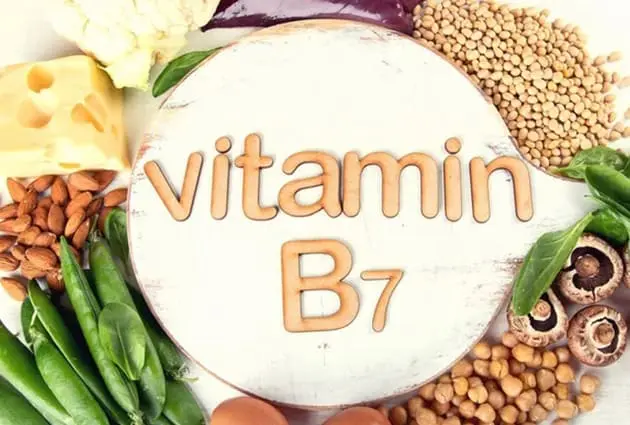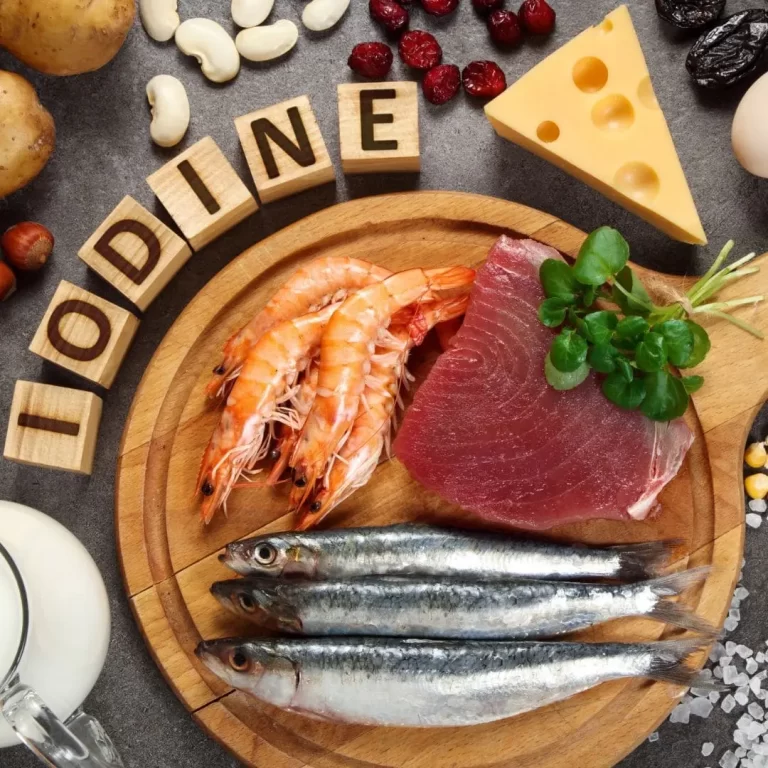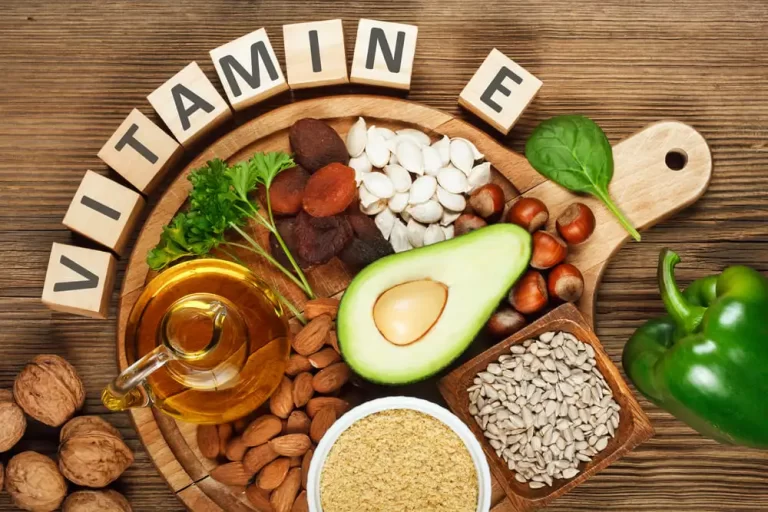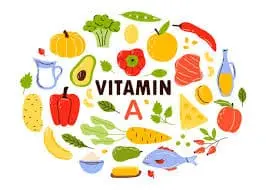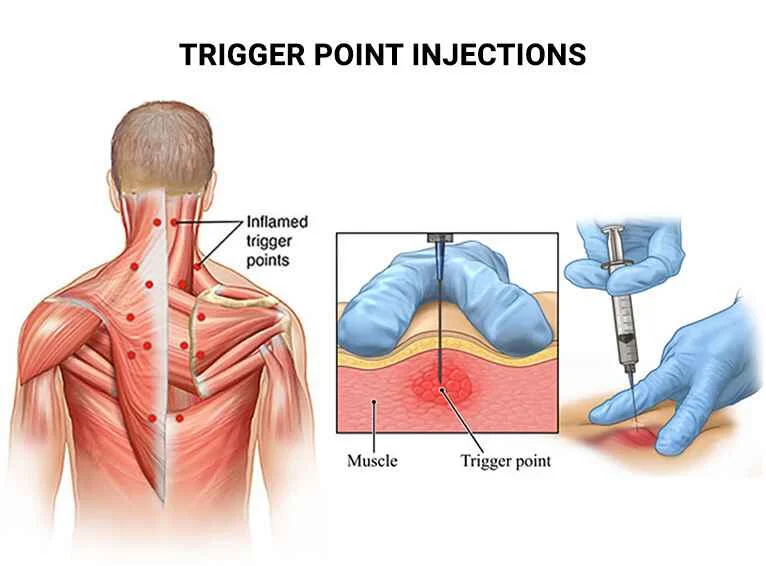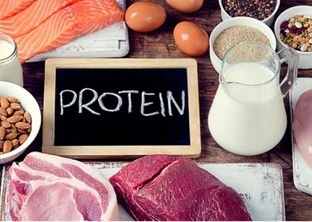Vitamin B7 (Biotin)
Introduction
One of the B vitamins is biotin, sometimes referred to as vitamin H or B7. It is engaged in many different metabolic processes, mostly connected to the use of lipids, carbs, and amino acids, in both humans and other species.
The term biotin originates from the Ancient Greek word βίoτος (bíotos; ‘life’) and the suffix “-in” (a suffix typically used in chemistry to signify ‘forming’). It was derived from the German Biotin. Biotin has a needle-like appearance and is a white, crystalline substance.
Chemical Description
With a ureido group attached to a tetrahydrothiophene ring containing sulfur, biotin is categorized as a heterocyclic molecule.
The former ring has a side chain of C5 carboxylic acid attached to it. In carboxylation processes, the ureido ring—which has the −N−CO−N− group—acts as the carbon dioxide carrier.
Five carboxylase enzymes, which are involved in the synthesis of fatty acids, the catabolism of amino acids and fatty acids, and gluconeogenesis, require biotin as a cofactor.
Chromatin stability and gene expression are influenced by the biotinylation of histone proteins in nuclear chromatin.
Dietary Recommendations
Dietary Reference Intakes for numerous vitamins were revised by the US National Academy of Medicine in 1998.
The majority of vitamins were not yet classified as having an estimated average requirement or recommended dietary intake due to a lack of information at the time.
In situations like this, the academy establishes adequate intakes (AIs) with the knowledge that more precise information will replace AIs at a later time when the physiological effects of biotin are well understood.
AIs for biotin in both males and females, the recommended daily intake of biotin is as follows: 5 μg for 0- to 6-month-olds, 6 μg for 7–12-month-olds, 8 μg for 1-to-3-year-olds, 12 μg for 4-to-8-year-olds, 20 μg for 9–13-year-olds, 25 μg for 14–18-year-olds, and 30 μg for those 19 years of age and above.
The biotin artificial intelligence supplements for females aged 14 to 50 years old who are pregnant or lactating are 30 μg/day for pregnant females and 35 μg/day for lactating females.
Similar to the US, Australia and New Zealand set their AIs.AIs are also identified by the European Food Safety Authority (EFSA), which sets levels at 40 μg/day for adults, 40 μg/day for pregnant women, and 45 μg/day for nursing mothers.
The AIs rise with age in children aged 1-17, from 20 to 35 μg/day.
Safety
When the evidence for a genuine limit is strong enough, the US National Academy of Medicine sets estimates for upper limits for vitamins and minerals.
However, there is no maximum limit for biotin because it has not been identified what negative effects there could be from consuming high amounts of biotin. Analyzing safety in the same manner as the US, the EFSA came to the same result.
Labeling Regulations
To comply with US regulations on food and dietary supplement labeling, the amount in a serving is stated as a percentage of the daily value.
In order to comply with the adequate intake, the biotin labeling requirement was changed to 30 μg/day on May 27, 2016, from the original 300 μg/day.
Businesses with annual food sales of at least US$10 million were required to comply with the revised labeling laws by January 1, 2020, while businesses with smaller volume food sales had to comply by January 1, 2021.
Reference Daily Intake provides a table with the current and old adult daily values.
Sources
Cooking does not degrade biotin because it remains stable at room temperature. It has been calculated that the dietary biotin intake of Western populations falls between 35 and 70 μg/day.
| Source | Amount (μg / 100 g) |
| Chicken liver | 187 |
| Beef liver | 42 |
| Eggs | 21 |
| Egg white | 5.8 |
| Egg yolk | 27 |
| Salmon, canned in water | 5.9 |
| Pork chop | 4.5 |
| Turkey breast | 0.7 |
| Tuna, white, canned | 0.7 |
| Source | Amount (μg / 100 g) |
| Peanuts, roasted | 17.5 |
| Sunflower seeds, roasted | 7.8 |
| Almonds, roasted | 4.4 |
| Sweet potato | 1.5 |
| Broccoli | 0.9 |
| Tomato | 0.7 |
| Strawberry | 1.5 |
| Avocado | 1.0 |
| Corn, canned | 0.05 |
| Source | Amount (μg / 100 g) |
| Cheese | 1.4 |
| Milk | 0.1 |
| Oatmeal | 0.1 |
| Bread | 0.1 |
| French fries | 0.3 |
| Wine | 0.1 |
| Beer | 0.1 |
| Potatoes, mashed | 0.1 |
A nursing newborn consumes roughly 6 μg daily. You can purchase biotin as a standalone supplement or as a component of multivitamins.
Government Fortification Programs
The Global Fortification Data Exchange states that since biotin deficiency is so uncommon, no nation mandates the fortification of food.
Physiology
The B vitamin biotin is soluble in water. When considerable amounts are consumed as a dietary supplement, they are absorbed and then excreted as biotin into the urine. When biotin is consumed as part of a regular diet, both biotin and its metabolites are excreted in the urine.
Absorption
Food-borne biotin is bonded to proteins. Proteins are broken down into biotin-bound peptides by digestive enzymes.
Biotin is released by the intestinal enzyme biotinidase, which is present in pancreatic secretions and the brush border membranes of the small intestine’s three sections.
The small intestine then absorbs the freed biotin. Because biotin absorption is nonsaturable when taken as a dietary supplement, even very large doses are successfully absorbed.
Compared to the ileum, the jejunum transports information more quickly. The amount of biotin synthesized by the large.
Intestine microbiota is thought to be comparable to that which is consumed by diet, and a sizable amount of this biotin is present in the free (protein-unbound) form, making it absorbable.
Although a review did note that human colon epithelial cells in vitro showed the ability to ingest biotin, the amount taken by individuals is unknown.
The liver absorbs biotin through the sodium-dependent multivitamin transporter (SMVT), which facilitates its uptake.
Because SMVT also binds pantothenic acid, excessive use of one of these vitamins may obstruct the other’s delivery.
Metabolism and Excretion
Catabolism of biotin takes place through two routes. In one, bisnorbiotin is produced by cleaving the sidechain of valeric acid. Biotin sulfoxide is produced through the oxidation of sulfur in the alternative pathway. In urine, biotin makes up around half of the content, along with bisnorbiotin, biotin sulfoxide, and trace levels of other metabolites.
Factors That Affect Biotin Requirements
Prolonged alcohol consumption is linked to a notable decrease in plasma biotin levels. The anti-epilepsy medications primidone and carbamazepine appear to have an impact on intestinal biotin uptake as well.
Athletes, burn patients, elderly people, and those who have undergone a partial gastrectomy have all been found to have relatively low levels of biotin in their urine or plasma, along with patients who have other causes of achlorhydria.
Getting pregnant and nursing could be linked to a rise in the need for biotin. This could be because of a potential acceleration of the breakdown of biotin during pregnancy, but the reason for the increased need during lactation is still unknown.
Recent research has demonstrated that there may be a little biotin shortage during human gestation, as indicated by elevated excretion of 3-hydroxy isovaleric acid in the urine, reduced excretion of bisnorbiotin and biotin in the urine, and lower biotin plasma concentration.
Biosynthesis
Plants produce biotin, which is necessary for the growth and development of plants. Biotin is also synthesized by bacteria, and it is believed that bacteria living in the large intestine may produce biotin that the host organism absorbs and uses.
Pimeloyl-CoA and alanine are the first two precursors used in synthesis. 7-keto-8-aminopelargonic acid (KAPA) is created via these.
Plant peroxisomes transfer KAPA to the mitochondria, where the enzyme BioA helps it change into 7,8-diaminopelargonic acid (DAPA).
Dethiobiotin synthetase is an enzyme that catalyzes the creation of the ureido ring via a DAPA carbamate triggered with ATP.
BioD helps to create dethiobiotin, which is subsequently transformed into biotin, which is catalyzed by BioB.
The radical SAM enzyme biotin synthase catalyzes the last step. The sulfur is provided by a peculiar ferredoxin [2Fe-2S]. Numerous routes exist for the synthesis of biotin, depending on the species of bacteria involved.
Cofactor Biochemistry
Five human carboxylase enzymes are covalently attached to biotin by the enzyme holocarboxylase synthetase:
- Alpha carboxylase of acetyl-CoA (ACC1)
- The beta-acetyl-CoA carboxylase (ACC2)
- PC, or pyruvate carboxylase
- MCC, or methylcrotonyl-CoA carboxylase
- The carboxylase of propionyl-CoA (PCC)
For the first two, bicarbonate is transferred to acetyl-CoA by biotin, which then transforms it into malonyl-CoA for the production of fatty acids.
PC has a role in the gluconeogenic process. In the metabolism of leucine, MCC catalyzes a step. A stage in the metabolism of propionyl-CoA is catalyzed by PCC.
Biocytin is produced when the biotinylated carboxylases are broken down metabolically. Biotinidase further breaks down this molecule to liberate biotin, which holocarboxylase synthetase uses again.
One posttranslational alteration that affects both gene expression and chromatin integrity in nuclear chromatin is the biotinylation of histone proteins.
Deficiency
Due to the fact that biotin is present in so many foods, a primary biotin deficit—a shortfall resulting from inadequate intake of biotin—is unlikely.
Mild symptoms like brittle fingernails, thinning hair, or skin rashes, usually on the face, can be caused by subclinical deficiency.
In addition to insufficient food consumption, which happens seldom, a genetic disease affecting biotin metabolism can also result in a biotin deficit.
Among these, biotinidase deficiency is the most prevalent. This enzyme’s low activity prevents biotin from being recycled from biocytin.
Deficiencies in biotin transporters and carboxylase are less common. In 1984, the United States began screening newborns for biotinidase deficiency.
Today, several other nations similarly screen for this genetic condition at birth. A lifetime of biotin supplements is the course of treatment. Untreated biotinidase deficiency has the potential to be lethal.
Diagnosis
Inadequate intake of biotin is not indicated by low levels of biotin in the urine or serum. Serum testing, however, can be helpful in confirming the usage of dietary supplements.
Containing biotin and determining if a sufficient amount of time has passed since supplement use to remove any possibility of influencing drug tests.
Indirect measurements rely on carboxylases’ need for biotin. 3-The catabolism of the amino acid leucine involves an intermediary process called methylcrotonyl-CoA.
When biotin is not present, the process switches to 3-hydroxyisovaleric acid. This compound’s excretion in the urine is a sensitive and early sign of a biotin deficit.
Deficiency As a Result of Metabolic Disorders
A hereditary genetic defect results in a lack of the enzyme biotinidase, which is responsible for recycling biotin.
Each holocarboxylase’s proteolytic breakdown products, biocytin and biotinyl-peptides, are broken down into biotin and recycled by biotinidase.
It plays a crucial role in releasing biotin that has been bound to food proteins. In 1984, the United States initiated the practice of screening newborns for biotinidase deficiency, and as of 2017, over 30 countries were reported to have adopted the same policy.
One in 40,000 to one in 60,000 people have profound biotinidase deficiency, which is defined as less than 10% of normal serum enzyme activity (7.1 nmol/min/mL), though rates as high as one in 10,000 occur in nations where consanguineous marriages (second cousin or closer) are common.
10% to 30% of normal serum activity is considered a partial biotinidase insufficiency. The source of incidence statistics is government-mandated neonatal examination.
An oral dosage of 5–20 mg daily is the recommended course of treatment for severe insufficiency. It has been seen that seizures go away in a matter of hours to days, whereas other symptoms take weeks to go away.
Although some individuals with untreated partial biotinidase deficiency never show symptoms, treatment is still advised in this case.
For both significant and partial biotinidase insufficiency, lifelong supplementation with biotin is advised. Multiple carboxylase deficiency refers to inherited metabolic diseases marked by reduced activity of biotin-dependent carboxylases.
Among these are defects in the enzymes synthetase and holocarboxylase. A lack of holocarboxylase synthetase interferes with several carboxylase processes by preventing the body’s cells from utilizing biotin efficiently.
Additionally, the sodium-dependent multivitamin transporter protein may be impacted by a genetic abnormality.
Any of these metabolic abnormalities can present biochemically and clinically as ketolactic acidosis, organic aciduria, hyperammonemia, rash, hypotonia, seizures, baldness, and coma.
Use in Biotechnology
In the biotechnology sector, chemically altered forms of biotin are frequently employed for the purpose of separating proteins from non-protein substances for use in biochemical tests.
By taking advantage of this extremely stable association, biotinylated molecules of interest can be extracted from a sample.
Egg-derived avidin binds strongly to biotin, with a dissociation constant Kd = 10−15 M. First, a procedure known as “biotinylation” attaches the chemically altered biotin reagents to the desired molecules in a solution.
The binding of the biotin reagent is caused by the chemical alteration that is selected.to a certain protein.
Subsequently, the specimen is subjected to an avidin-bearing incubation period, during which it is washed to eliminate any unbound proteins and retain only the avidin-bound biotinylated protein.
Finally, the excess free biotin can be used to elute the biotinylated protein from the beads. The method can also be used using streptavidin generated from bacteria coupled to beads.
However, due to its greater dissociation constant than avidin, very severe conditions are required to elute the biotinylated protein from the beads, which frequently results in the denaturing of the target protein.
Interference With Medical Laboratory Results
A consequence of high biotin consumption in dietary supplements may be a clinically significant interference with biotin-streptavidin-based diagnostic blood tests.
This technique is frequently used to assess the amounts of various analytes, such as 25-hydroxyvitamin D, and hormones, such as thyroid hormones.
Results that are mistakenly abnormal or falsely normal can both be caused by biotin interference. In the United States, biotin is available as a non-prescription dietary supplement with claims to enhance the health of hair and nails.
Ranging from 1 to 10 mg per serving, to 300 mg daily as a potentially useful treatment for MS (see § Research).
When 5 mg or more is consumed excessively every day, the concentration in plasma is raised and can interact in an unanticipated way with biotin-streptavidin immunoassays.
It is recommended that healthcare providers advise patients to cease taking supplements containing biotin 48 hours or even weeks prior to the test, contingent upon the particular test, dosage, and frequency of absorption.
It is suggested that laboratory personnel follow guidelines to identify and handle biotin interference.
History
W. G. Bateman noted in 1916 that dogs, cats, rabbits, and humans all had toxic symptoms when fed a diet heavy in raw egg whites.
By 1927, researchers like Margarete Boas and Helen Parsons had carried out studies that illustrated the signs of “egg-white injury.”
They discovered that rats given massive doses of egg white as their primary source of protein showed signs of dermatitis, hair loss, neurological malfunction, and finally, death.
The process of isolating a yeast growth factor was reported in 1936 by Fritz Kögl and Benno Tönnis in the journal paper “Darstellung von krystallisiertem biotin aus Nigel.
(Illustration of egg yolk crystalline biotin). The Greek word bios, which means “to live,” and the generally used chemical suffix “-in” are the sources of the term biotin.
The identical substance had been isolated by several independent research groups under different names.
Paul Gyorgy, a Hungarian scientist, started looking into the cause of egg-white damage in 1933 and was able to identify “Vitamin H” in 1939 (the H stands for Haar und Haut, which is German for “hair and skin”).
Additional analysis of vitamin H’s chemical makeup showed that it was highly concentrated and soluble in water in the liver.
Following trials involving Rhizobium trifolii and yeast, West and Wilson identified a substance they named co-enzyme R.
When it was discovered in 1940 that the three substances were identical, they were collectively referred to as biotin.
Gyorgy kept working on biotin, and in 1941 he released a paper showing that avidin’s binding of biotin was what was causing damage to egg whites.
In contrast to many vitamins, not enough data is available to determine a recommended dietary allowance.
Instead, dietary guidelines specify an “adequate intake” based on the best available science, with the assumption that more precise data will eventually replace this.
In 1968, Rolfe and Eisenberg proposed a biosynthetic process using E. coli. The first stage was defined as the condensation of alanine and timely-CoA to produce 7-oxo-8-aminopelargonic acid.
They then went on to outline a three-step procedure, the final of which involved adding a sulfur atom to create the tetrahydrothiophene ring.
Research
Multiple Sclerosis
In clinical trials, high-dose biotin (300 mg/day = 10,000 times adequate intake) has been used to treat demyelinating autoimmune diseases like multiple sclerosis.
According to the theory, biotin may encourage the myelin coating of nerve cells to become remyelinated, which could halt or even reverse neurodegeneration.
One of the suggested explanations is that acetyl-CoA carboxylase, a crucial enzyme that limits production rate, is activated by biotin.
of myelin and by decreasing axonal hypoxia by means of increased energy synthesis. The findings of clinical trials are conflicting; a 2019 review recommended that more research be done on the possible link between biotin and symptoms of multiple sclerosis.
Two 2020 reviews of a greater number of clinical trials found inconsistent evidence of benefits and some evidence of increased disease activity and relapse risk.
Hair, Nails, Skin
Although there is very little scientific evidence to support these claims in people, biotin is advertised as a dietary supplement in the United States with the aim of strengthening hair and fingernails.
According to a study of the literature on fingernails, two clinical trials conducted prior to 1990 that used an oral dietary supplement of 2.5 mg/day for several months without a comparison group receiving a placebo showed improvement in brittle nails.
The literature on recent clinical trials is at an end. A review of the use of biotin to cure hair loss turned up case reports of young children and babies with genetic defects.
Biotin Despite showing increased hair growth following supplementation, the research continued, stating that “no randomized.
Controlled trials have been conducted to demonstrate the effectiveness of biotin supplementation in normal, healthy individuals”.
Topical hair and skin care products also contain biotin and make comparable promises. The US Food and Drug Administration has a responsibility to approve health claims about Structure Function (S: F) on product labels, stating that an ingredient or ingredients are essential to general health, in accordance with the Dietary Supplement Health and Education Act of 1994. For instance, biotin supports the upkeep of healthy nails, hair, and skin.
The disclaimer “This statement has not been evaluated by the Food and Drug Administration” must be on the label if a S: F claim is made. The purpose of this product is not to identify, treat, prevent, or cure any illness.”
Animals
For cattle to have healthy hooves, biotin is required. Lameness as a result of hoof issues is widespread; estimates of herd prevalence range from 10 to 35 percent.
[Reference required] Reduced food intake, decreased milk output, and higher veterinarian treatment expenses are all effects of lameness.
The risk of lameness is decreased after 4-6 months of taking a 20 mg/day biotin supplement in the diet.
A review of controlled trials found that adding 20 mg of supplementation per day resulted in a 4.8% increase in milk output.
There was conjecture during the conversation as to whether this would have a direct impact on milk output or be an indirect result of better hoof health.
Problems like cracked hooves, dry, brittle feet that can’t retain shoes, or chronic laminitis are frequent in horses.
One well-liked dietary supplement is biotin. It has been suggested that horses require 15 to 25 mg daily.
According to studies, biotin enhances the development of new hoof horns rather than the condition of the old hoof, therefore months of supplementation are required to replace the entire hoof wall.
FAQ
What is vitamin B7 used for?
Supplements containing biotin are frequently promoted as a cure for hair loss and as a way to support strong hair, skin, and nails. There is conflicting information regarding the benefits of supplementing with biotin, despite the fact that a shortage can undoubtedly cause hair loss and issues with the skin or nails.
Which food gives vitamin B7?
Although in modest concentrations, vitamin B7 can be found in many foods. Walnuts, peanuts, cereals, milk, and egg yolks are examples of this. This vitamin can also be found in wholemeal bread, sardines, ham, salmon, mushrooms, and cauliflower. Biotin-containing fruits include raspberries, bananas, and avocados.
What causes vitamin B7 deficiency?
Biotin, or vitamin B7, is a necessary component of several metabolic activities that are vital to the body’s general health. Inadequate dietary intake, some medical conditions, or continuous use of certain drugs can all result in a biotin shortage.
Which fruit is rich in biotin?
Avocados. There are 3.2–10 mcg of biotin in 100 grams of avocado. Because avocados are high in vitamin E, just like nuts and seeds, they can be a wonderful choice for anyone trying to protect the health of their skin.
Is vitamin B7 good for the skin?
In addition to helping with other bodily processes including pregnancy, biotin also promotes the health of your skin, hair, and eyes.
Can I take vitamin B7 daily?
Adults are advised to take 30 mcg per day. When pregnant, the recommended amount to ingest is the same. A daily intake of 35 mcg is recommended for breastfeeding mothers. The recommended dosage for kids varies based on their age.
Is vitamin B7 safe?
Milk, carrots, salmon, almonds, and many more foods and drinks contain biotin. If necessary, it can also be used as a supplement. It is advised to take 30 micrograms each day. It is not advised to take biotin pills, though, unless your doctor advises you to.

